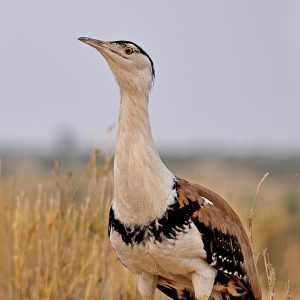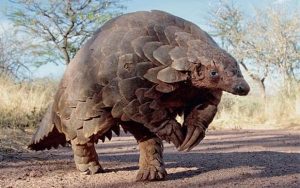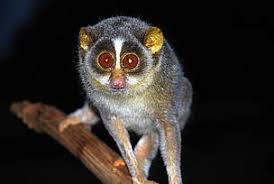IASbaba's Daily Current Affairs Analysis
IASbaba’s Daily Current Affairs [Prelims + Mains Focus]- 1st December 2017
Archives
(PRELIMS+MAINS EXCLUSIVE)
Maldives and China enter into Free Trade Agreement
Part of: Mains GS Paper II- India and its nieghbours, India and the World, International relations; India-Maldives issue
Key pointers:
- Maldives is the only country in the neighbourhood which has not been visited by Prime Minister Narendra Modi in the last three-and-half years after he cancelled a proposed trip in March 2015 due to the turbulent political situation.
- Maldives and India do not have a Free Trade Agreement.
- This is Maldives’s first FTA with any country, and China’s second FTA with any country in South Asia — after Pakistan.
- Maldives transitioned from Least Developed Country (LDC) to Middle-Income Country status on 1st January 2011.
Article link: Click Here
Caste lines get blurred in cities: A myth
Part of: Mains GS Paper II- Social or Dalit issues, Welfare schemes for vulnerable sections of the population by the Centre and States, mechanisms, laws, institutions and bodies constituted for the protection and betterment of these vulnerable sections.
Key pointers:
- The National Crime Records Bureau’s (NCRB) latest data on atrocities against Dalits shows that urban areas tend to reflect the pattern in their surrounding rural belts.
- So, while Uttar Pradesh and Bihar have always recorded the maximum crimes against Dalits, the NCRB data on caste-based atrocities in 19 metropolitan cities in 2016 — released for the first time — shows that Lucknow and Patna too top the list.
- A major chunk of crimes against Dalits involves the violation of women.
- Crimes against Dalits shows similarity between rural and urban spaces — and is partly against the theory of cities blurring caste lines.

Reason behind:
- Higher incidents of caste atrocities in cities could be because of greater awareness among urban Dalits about their rights, resulting in registration of more cases.
NCRB:
- While the NCRB has been gathering data on caste atrocities in metropolitan cities since 2014, this is the first time that it has released the figures.
- Since the data only records cases registered by the police, it may or may not reflect the actual ground situation.
- There is also no data available on the population of Dalits in cities, thus making it difficult to ascertain the proportion of caste atrocities (cases per one lakh population) in urban spaces.
Article link: Click Here
President’s visit to Mizoram
Part of: Mains GS Paper II – Development of NE; Inclusive development;
Key pointers:
- President terms the State ‘special’; hails its Assembly as “role model for democracy”
- Mizoram’s geography can be its biggest asset, and the government is working to ensure that.
- Role model for democracy– In its 45-year history, it (Assembly) has established a reputation for smooth conduct of business. The behaviour and participation of its members has conformed to the highest standards.
- The Mizo Accord of 1986 is held as a shining example all over the world- It ended an insurgency situation and a conflict that had divided India and Mizo society itself.
- Mizoram has achieved admirably in various human development indices such as literacy rate and sex ratio, but the infrastructural deficit remains acute.
Act East Policy and Mizoram:
- The President said the state is the focus of the Centre’s Act East policy that aims at providing access to new markets for the State.
- The policy will give Mizoram’s agricultural produce and traditional products entry to such markets, as well as strengthen information technology and Internet connectivity in the State
- Once we the infrastructure is created, the process will have a multiplier effect across a range of industries.
Way ahead:
The way ahead is to enhance connectivity in all its dimensions — i-ways (information ways), highways, airways, railways and waterways; ‘panch tatva ’.
Article link: Click Here
Increasing Cybercrime
Part of: Mains GS Paper III – Security issues; Cyber Security
Key pointers:
- Charge sheets filed in only 30% cases reported in 2016, shows NCRB data
- More than 12,000 incidents of cybercrime were reported in 2016
- In 2016, 12,317 such incidents were reported and in 2015 the figure stood at 11,592, a jump of 6.3%.
- Illegal gain (5,987 incidents) and revenge (1,056) were the two top motives that accounted for cybercrimes. Sexual exploitation (686), insulting the modesty of women (569) and causing disrepute (448) constituted 13% of the crimes.
- Uttar Pradesh with 2,639 cases reported the highest number of incidents accounting for 21.4%, followed by Maharashtra with 2,380, Karnataka 1,101 and Rajasthan 941cases.
Crimes against State
- Tamil Nadu topped the list when it came to booking people for committing crimes against the State, which includes cases of sedition.
- Of the 6,986 cases registered in 2016, 1,827 or 26% cases were reported from Tamil Nadu, followed by U.P. 1,414, Haryana 1,286 and Assam 343 cases.
- While 35 cases of sedition were reported in 2016, there were 31 cases related to imputation and assertions prejudicial to national integration.
- Under the Official Secrets Act, 30 cases were reported and 922 cases were registered under the Unlawful Activities (Prevention) Act. In 2016, the police across India were investigating 12,637 cases of crimes against the State, of this 5,651 had been pending since 2015.
- Meghalaya with 42 cases registered the most number of cases under Sections pertaining to sedition and waging war against the country.

Article link: Click Here
SC on Road Safety
Part of: Mains GS Paper II- Social and Health issues; Role of Judiciary; Judicial Activism/Overreach?
Key pointers:
SC directions
- All States and Union Territories should frame a Road Safety Policy.
- Should set up lead agencies to work as secretariats of State Road Safety Councils to coordinate on activities such as licensing issues like driving licences, registration of vehicles, road safety and features of vehicles.
- made it mandatory for States and Union Territories to establish Road Safety Fund, the corpus of which would come from traffic fines collected. The money would be used to meet the expenses for road safety.
- The court has also directed framing Road Safety Action Plans by March 31 to reduce the number of road accidents, as well as the fatality rate.
Cause of concern:
- 90 percent of the problem of deaths due to road accidents was the result of a lack of strict enforcement of safety rules on roads and strict punishment for those who do not obey rules.
- There was one death almost every three minutes due to road accidents. Only half the number of families of these victims were compensated.
Justice Radhakrishnan committee on road safety:
- Set up after the Supreme Court intervention.
- The Justice Radhakrishnan panel would fix the responsibility and functions of the State road safety councils.
- These councils would periodically review the laws and take appropriate remedial steps wherever necessary.
- Similarly, lead agencies and district road safety committees should be established by January 31, 2018.
Article link: Click Here
(MAINS EXCLUSIVE)
INTERNATIONAL RELATIONS
TOPIC General Studies 2:
- Bilateral, regional and global groupings and agreements involving India and/or affecting India’s interests
- Effect of policies and politics of developed and developing countries on India’s interests.
Background:
The reconciliation and rehabilitation of more than 836,000 Rohingya (including 623,000 since August, according to the UN’s International Organisation for Migration) who have fled gruesome violence in Myanmar has become a global issue.
In every way, the Rohingya crisis is mammoth, with around a million men, women and children in Bangladesh and Myanmar living perilously.
Issue:
- India has been soft-footed and silent in comparison to other countries like China, U.S., Canada and Singapore.
China’s involvement:
- In a rare shift of position from not involving itself in the internal politics of, China decided to play a mediatory role in the issue. The Chinese foreign minister went to Dhaka to meet Prime Minister Sheikh Hasina, and then to Myanmar.
- A three-phase solution: Bangladesh and Myanmar announced an agreement to begin the repatriation of Rohingya refugees back to Rakhine province after China’s interference in the issue.
Biggest nation, smallest voice:
- No Indian leader has visited Myanmar in relation to Rohingya issue.
- As the subcontinent’s biggest nation, neighbour to both Bangladesh and Myanmar, as well as the country most likely to be affected if the numbers of Rohingya refugees continue to grow, India, in fact, should be showing the most initiative in this crisis.
- Even as hundreds of thousands were fleeing violence at home, Indian Government refused to refer to the Rohingya in its press statements in Naypyidaw in early September.
- Bali declaration- In Bali, India refused to endorse a 50-nation parliamentarian conference’s declaration because it referenced the Rohingya. Every other South Asian country, including Buddhist-majority Bhutan and Sri Lanka, endorsed the Bali declaration.
- In contrast to India’s own record: India has a tradition of rushing humanitarian aid and medical assistance, doctors and volunteers to other nations — for example, after the 2004 tsunami, the 2008 Cyclone Nargis that hit Myanmar, and the 2015 Nepal earthquake. India’s half-hearted effort in Rohingya issue is thus in stark contrast.
Operation Insaniyat (Humanity):
- Launched in September, the government began to dispatch humanitarian aid under this operation.
- Several countries including the U.S., Turkey, Azerbaijan, Malaysia and others were already doing so.
Position at the UN:
- India’s voice at UN has been consistently muted, ceding space to other countries to take the lead on the issue.
- At the UNGA’s Third Committee vote, India abstained on a resolution calling for an end to military action, one of 26 abstentions on the proposal to send a UN fact-finding mission to Myanmar — 135 countries voted in favour of the resolution.
- While India’s vote is consistent with its position on interventionist resolutions, it doesn’t mark itself out for principled leadership of any kind.
Being part of the solution to the crisis:
All of India’s actions since the outbreak of this round of violence in Myanmar have negated its position as a regional, subcontinental and Asian leader. Regaining that stature will require a more proactive stance in being part of the solution to the crisis.
- The impression that the government’s decision to push out nearly 40,000 Rohingya living in India since 2012 is guided by its domestic political compulsions is not conducive to India’s international ambitions.
- India should put its own concerns about repatriation on hold until it is able to work with both Bangladesh and Myanmar on the issue, preferably in a trilateral format.
As India has earlier worked on regional issues as a part of BIMSTEC, this would be easier for India.
Time to have a refugee policy:
- The government must also iron out internal contradictions on India’s refugee policy.
- Even though it is not a signatory to any UN refugee convention, India has a proud tradition of giving a home to neighbours in distress: from Tibetans in 1960s to East Pakistanis in the 1970s, from Sri Lankans in the 1980s to the Afghans in the 1990s.
- Recently, government even changed its long-term visa rules to help minorities fleeing violence from neighbouring Afghanistan, Bangladesh and Pakistan.
- India also has a unique position as a country that is home to every religion practised in the region and must play to this strength.
Conclusion:
- Thus, India, which has high stakes in global and regional governance, must ensure its voice is heard on the Rohingya crisis. Not taking a stand while one of the biggest human tragedies is unfolding across two of India’s borders does not suits to a nation with global leadership aspirations. India’s shyness on the Rohingya crisis undermines its democracy and global standing.
Connecting the dots:
-
India, which has high stakes in global and regional governance, must ensure its voice is heard on the Rohingya crisis. Discuss.
ENVIRONMENT/ECOLOGY
TOPIC General Studies 3:
- Conservation, environmental pollution and degradation, environmental impact assessment.
- Government policies and interventions for development in various sectors and issues arising out of their design and implementation.
Conservation of small species
Introduction:
The below article deals with some important critically endangered and threatened species and concerns with regard to flaws in animal conservation strategy, especially the small animals which are on the verge of extinction.
Concern:
- Most of the stakeholders – such as policymakers, bureaucrats, animal lovers, media, etc – give more priority to certain mega species and ignore small but equally important species.
- For instance, when a tiger or a rhino or an elephant dies, the tragic news straight away hit front pages of newspapers and attracts all policy actions from different stakeholders, which intent to avert another such death.
- However, several smaller species die, or are near extinction, or are threatened in India – which does not evoke the same public outcry or action.
- Some of this list includes – Great Indian Bustard, the house sparrow, the shy Indian pangolin, the caracal, the slender loris and the star tortoise among others
Need for a similar action on lines of Project Tiger/Elephant:
- Conservation of Tiger was given a superior and distinguished position and tigers were kept first among equals. Slogans were heard that ‘in protecting the tiger we are protecting an ecosystem’ (especially the high grasslands). But it is now time those animals in the dry grasslands and the mountains get same elevated position.
- Excellent conservation work has helped tiger population to prosper again in many tiger sanctuaries and has led to greater siting of the snow leopard in the snowy reaches of Ladakh and Himachal Pradesh.
- Similar support should be extended to its prey base and the less glamorous species of the region.
THE FORGOTTEN ONES
Case 1: Hog Deer

Pic Link: https://www.zoochat.com/community/media/hog-deer-axis-porcinus.191742/full?d=1341419297
- The hog deer, which are prolific breeders, were the principal food of the tiger in the grasslands of Corbett National Park in the sixties. There was an abundance of them and it was a major species of the park, vital for the survival of the tiger. Now there may be just 20 of them in Corbett and no one seems concerned.
- The Indian hog deer is a small deer whose habitat ranges from Pakistan, through northern India, to mainland southeast Asia, which inhabits much of the Indo-Gangetic Plains of Pakistan, northern India, Nepal, Bangladesh, southwestern Yunnan Province in China, all the way to western Thailand.
- IUCN Conservation status: Endangered (Threatened)
- Hog Deer is threatened by hunting and by habitat loss and degradation
Case 2: Chital

Pic Link: https://media1.britannica.com/eb-media/31/122931-004-434FE200.jpg
- The preferred food of the tiger is the chital. However, there were not enough of them in the sixties to provide sustenance for the tiger, so the focus was on the hog deer.
- The chital or cheetal also known as spotted deer or axis deer, is a species of deer that is native in the Indian subcontinent.
- IUCN Conservation status: Least Concern
Case 3: Great Indian Bustard

Pic Link: https://whitleyaward.org/wp-content/uploads/2015/04/Great-Indian-bustard.jpg
- One of the rarest species and undoubtedly one of the most endangered is the Great Indian Bustard, which is the State bird of Rajasthan.
- Endemic to Jaisalmer and Pokhran, its habitat was severely damaged by the nuclear tests in 1974 and 1998. Once widely spotted across 11 Indian states, but their numbers now stand at 60 in Rajasthan and the world population of the bird may be just 80. In Gujarat, not a single adult male has been sited. Power lines are pushing out the birds.
- IUCN Conservation status: Critically Endangered
Case 4: Chevrotain/Mouse Deer

- The mouse deer (scientific name Chevrotain) is a miniature, just a foot high species of even-toed ungulates.
- It lives in rainforests and is nocturnal. It can be found in the Sal forests of south India, Madhya Pradesh and West Bengal.
- Mouse deer meat is said to be delectable and before the Wildlife Act came into existence, it cost thrice the price of any other meat. The mouse deer raises its young in the hollow of the fallen Sal, but unfortunately these trees are used as fuel wood.
- IUCN Conservation status: Least Concern
Case 5: Caracal

Pic Link: https://i.pinimg.com/736x/2e/3c/f8/2e3cf8c8bfc3e79768520f3f9b35eeb7–bird-hunter-caracal.jpg
- The caracal has disappeared from the Kuno sanctuary of Madhya Pradesh. However, there are records of it being seen in Ranthambore in Rajasthan and in Kutch, Gujarat.
- The Indian Chevrotain inhabits most of the India, from Tamil Nadu and Kerala in the far south, north to at least 24°N, i.e. Mandla, Hoshangabad, Palamau and near Udaipur (Rajasthan)
- IUCN Conservation status: Least Concern
Case 6: Malabar civet cat

Pic link: https://i.pinimg.com/originals/8c/62/a5/8c62a5e9b324980317300d473be39c78.jpg
- Malabar civet, is a viverrid endemic to the Western Ghats of India. It is listed as Critically Endangered by IUCN as its population size is estimated to number fewer than 250 mature individuals, with no subpopulation greater than 50 individuals.
- It is feared that the Malabar civet cat may have gone into extinction.
- IUCN Conservation status: Critically Endangered
Case 7: Pangolin

- The pangolin, which can be found all over India, seems doomed because its scales, which are said to have medicinal value and are more expensive than gold, are sheared ruthlessly.
- Its meat too is in demand in China. Illegal trade continues not just in parts where there are tigers but also in parts where there are musk deer, otter, mongoose and other animals.
- IUCN Conservation status: Endangered
Case 8: Slender loris

- The slender loris, a nocturnal animal found in the Western Ghats, and the tortoise are traded in the pet market.
- IUCN Conservation status: Endangered
Conclusion:
Now with reports of nomadic Gujjars making forays into Dachigam, the Hangul, the only deer species of its kind, is down to around 200.
Manipur’s State animal, the brow-antlered deer or Sangai, which lives on the floating morass of Loktak Lake, is also fighting for survival with numbers down to around 200. However, with Sangai festivals and Sangai tour services, Manipur is going all out to protect them.
With so many small animals on the verge of extinction, it is time we gave priority to animals on the basis of the threat perception to them. Today, we have the expertise to save them but lack the political will. They are perched on a precipice and unless we act, they will become as dead as the dodo.
Connecting the dots:
- Critically analyse government’s conservation policies and discuss with examples the need for extending support to small species and especially the less glamorous species.
MUST READ
Some animals are more equal than others
Dealing with data
Buried in the rankings din
Responsibility without power
Indian healthcare’s inconvenient truth
Developing on the pharma success story











